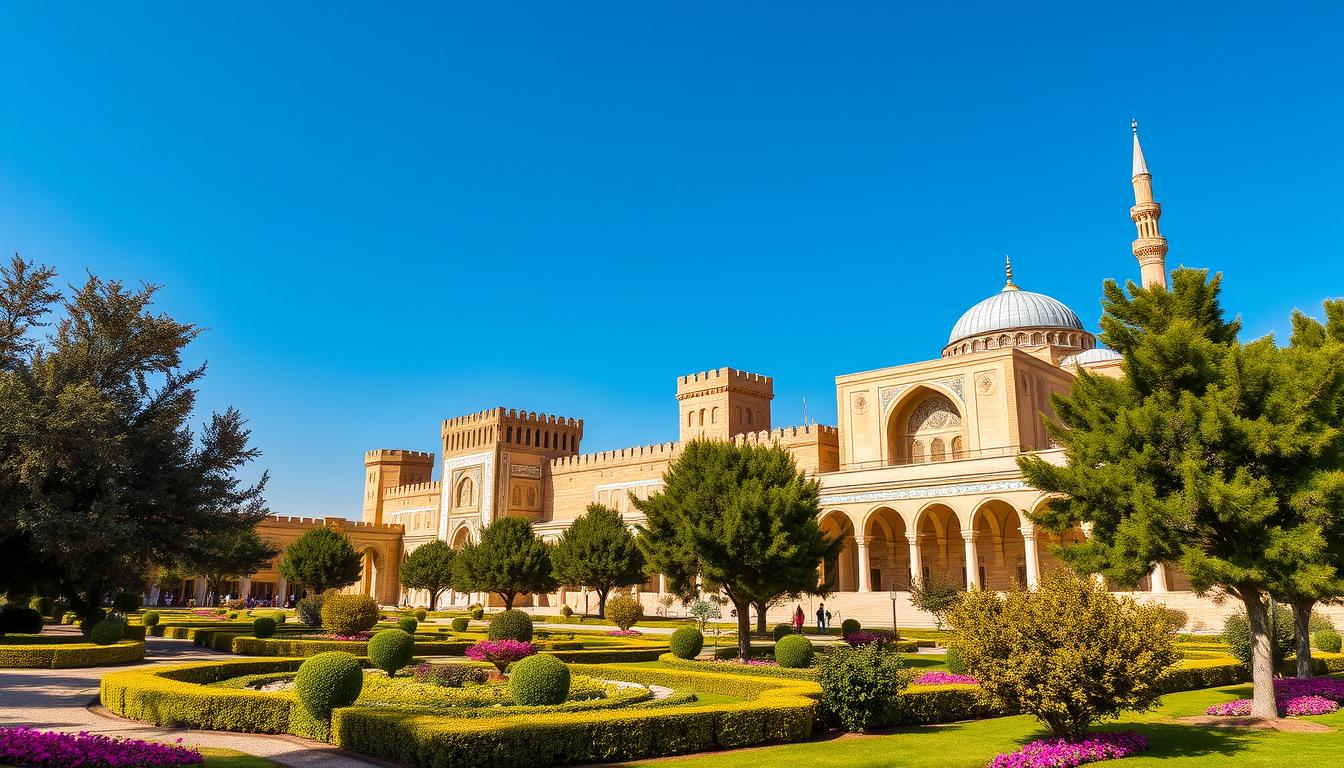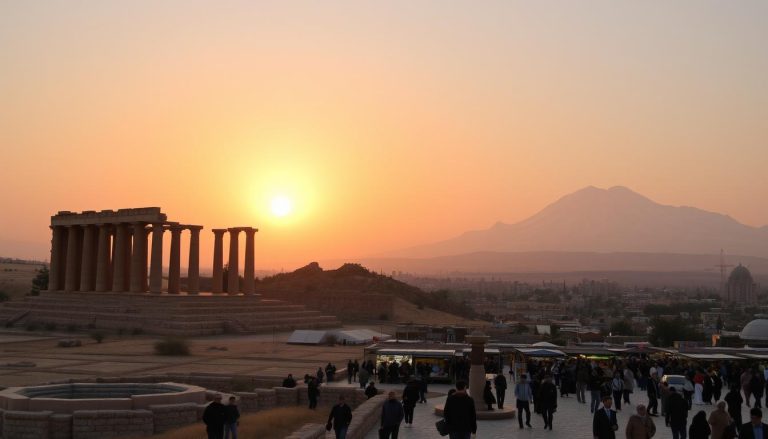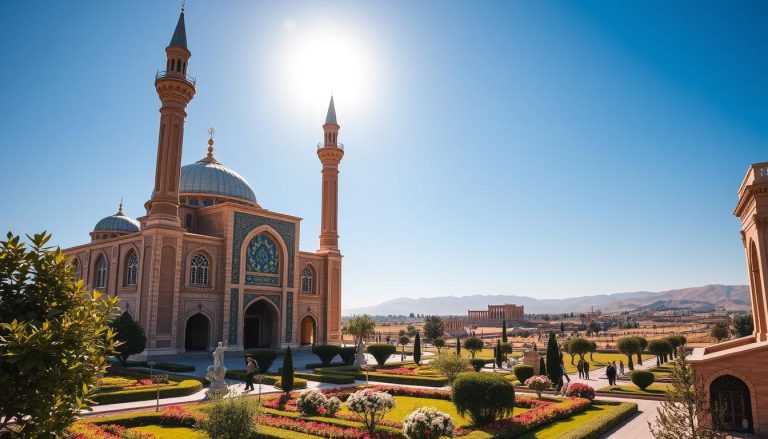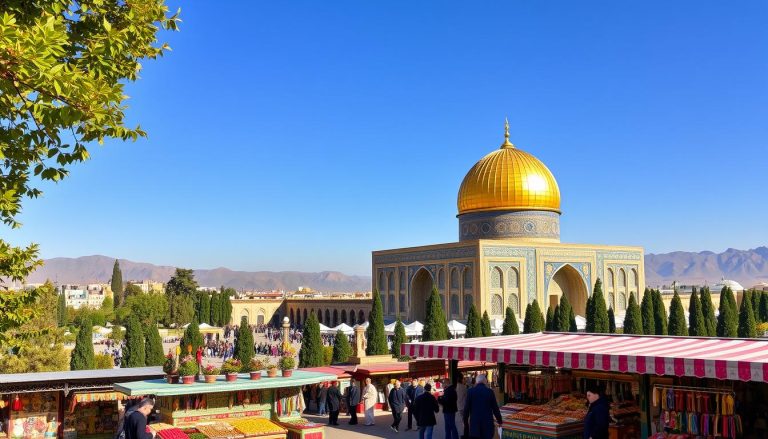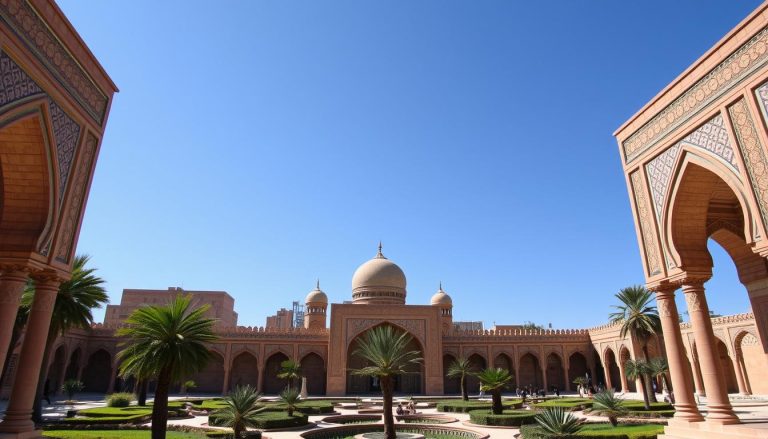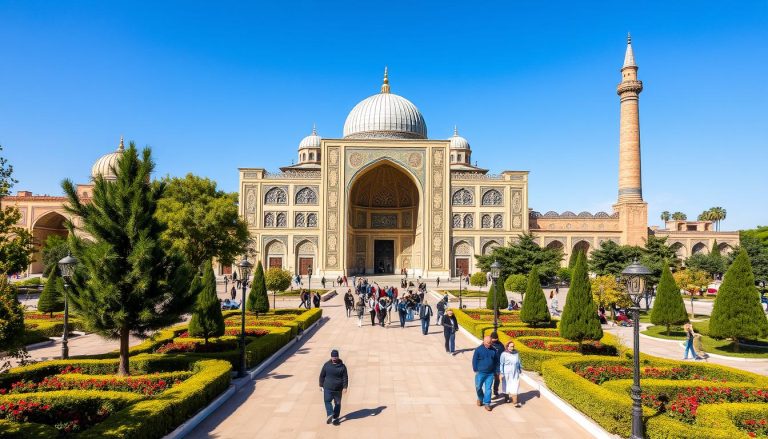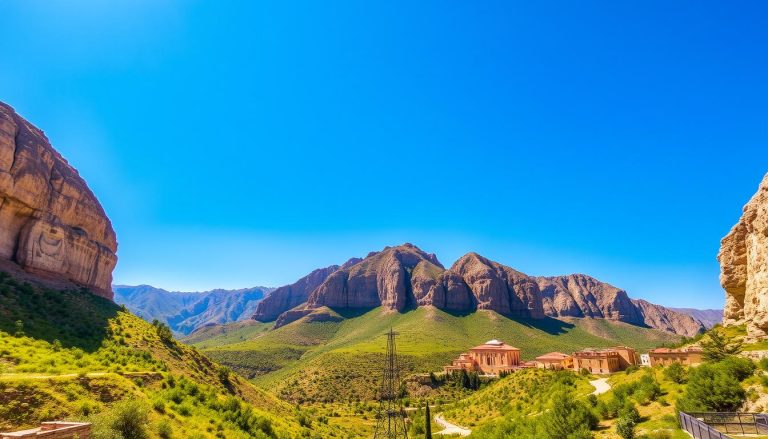Qazvin is a hidden gem just two hours from Tehran. It’s a mix of Persian history, culture, and natural beauty. What makes this former capital of the Persian Empire special? What secrets await the traveler in this Iranian city? Get ready to explore Qazvin’s top attractions and discover its timeless charm.
Key Takeaways
- Qazvin, the former capital of the Persian Empire, is a city rich in history and cultural heritage.
- Explore the Alamut Valley and the Castle of the Assassins, immersing yourself in the region’s mysterious past.
- Discover the Grand Bazaar, a shopping paradise brimming with traditional crafts and local delicacies.
- Indulge in the city’s culinary delights, like the renowned Qazvin baklava and the savory gheymeh nesar.
- Uncover the architectural marvels of Qazvin, from the Sa’ad al-Sultaneh Caravanserai to the city’s sacred sites and museums.
Introduction to Qazvin: The Former Persian Capital
Qazvin is a city filled with history, once the capital of the Persian Empire. It has a rich heritage that spans over a thousand years. As a key center of power and culture, Qazvin offers a unique look into Iran’s captivating past.
Historical Significance of Qazvin
Qazvin’s history goes back to the 3rd century BC, when it was a strategic military outpost. It became the capital of the Safavid dynasty in the 16th century. During this time, Qazvin flourished, with the building of grand palaces and mosques that still amaze visitors today.
Best Time to Visit
The spring and fall seasons are the best times to visit Qazvin. The weather is mild and perfect for exploring the city’s historic sites. It’s also great for wandering through the vibrant bazaars and experiencing the local culture.
Getting to Qazvin from Tehran
Qazvin is just two hours away from Tehran by bus. Buses leave regularly from the Azadi (West) Terminal in Tehran. The journey is scenic, offering views of the countryside and hills around the former Persian capital.
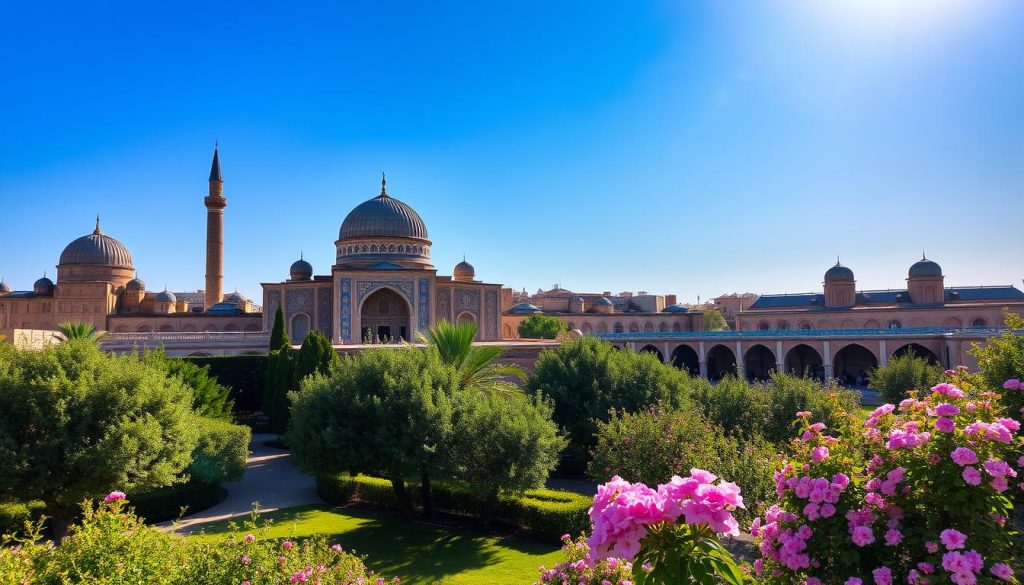
“Qazvin’s rich history and cultural heritage make it a must-visit destination for anyone exploring the wonders of Iran.”
Exploring the Mysterious Alamut Valley
The Alamut Valley is just 1.5 hours from Qazvin. It’s filled with history and mystery. This area, with mountains from 1300 to 2300 meters, is famous for the Castle of the Assassins.
Castle of the Assassins History
The Castle of the Assassins is a key spot in the Alamut Valley. It was the base of Hassan-i-Sabbah and his followers. This 11th-century fortress is full of stories from the past.
Hiking and Trekking Opportunities
The Alamut Valley is great for hiking and trekking. Voters have rated the physical preparedness for an Alamut Hiking Tour at 5/5, and the desire to omit hiking from the tour at 5/5. It’s perfect for those who love the outdoors.
Transportation and Guide Services
Local guides like Yousef Shariotkhoo make exploring easy. They offer 10-hour tours with everything you need. Accommodations during Alamut hiking tours generally consist of ecolodges and local houses, where local lifestyle experiences are offered.
So, get your hiking boots ready. Discover the Alamut Valley’s secrets. It’s a true highlight of Iran trekking and showcases the country’s beauty and history.
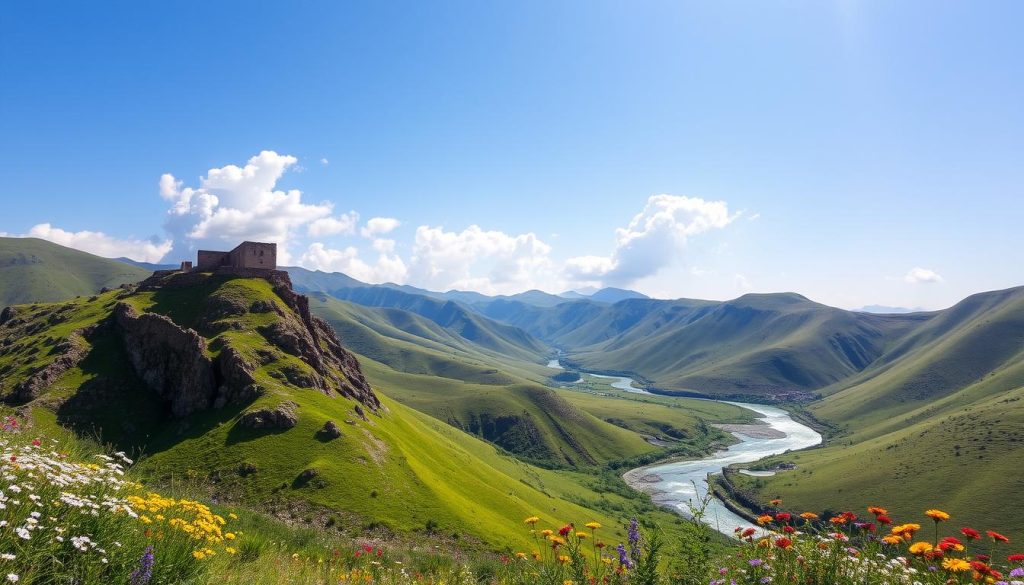
The Grand Bazaar: A Shopping Paradise
Step into the captivating world of the Qazvin Grand Bazaar, a vibrant Iranian market. It has stood the test of time for over a millennium. Located on Imam Khomeini Street, this historic marketplace offers a mesmerizing blend of ancient architecture and thriving commerce.
As you wander through the maze of colorful stalls, you’ll be greeted by the aroma of exotic spices. You’ll see intricate patterns of handcrafted textiles and the friendly banter of local merchants. From traditional crafts and artisanal goods to fragrant teas and aromatic oils, the Qazvin Grand Bazaar is a shopper’s paradise.
Explore the intricate vaulted ceilings, ornate doorways, and winding passages. These have witnessed the passage of generations of traders and artisans. Lose yourself in the vibrant hustle and bustle, haggling with skilled merchants and discovering unique treasures.
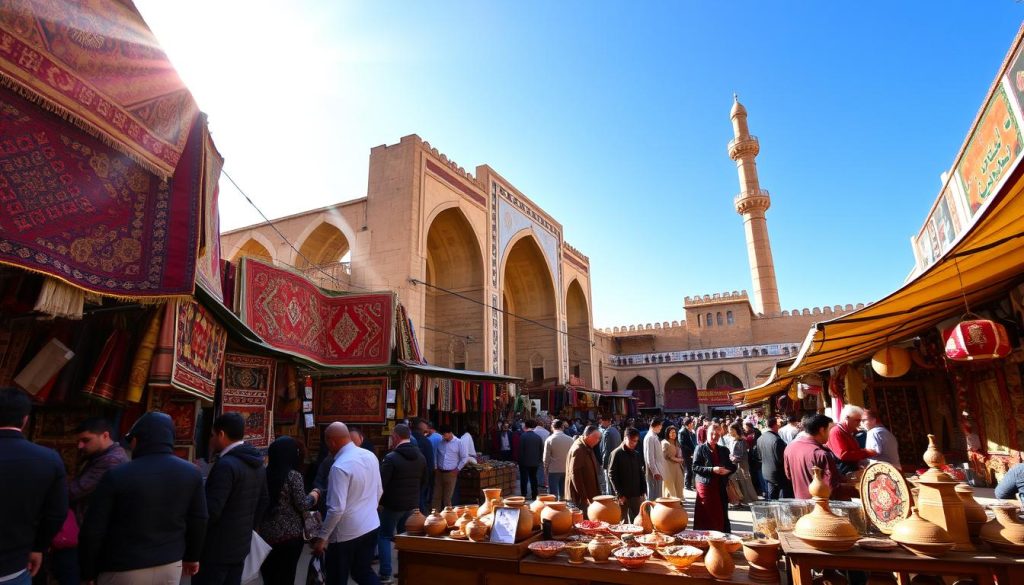
The Qazvin Grand Bazaar is not just a shopping destination; it’s a gateway to understanding the Iranian market tradition. Immerse yourself in the sights, sounds, and traditions of this timeless institution. Here, the past and present seamlessly intertwine, offering a truly unforgettable experience.
| Product | Average Price |
|---|---|
| Traditional Carpets | $50 – $500 |
| Handmade Ceramics | $10 – $100 |
| Spices and Herbs | $2 – $20 per pound |
| Copper Kitchenware | $20 – $150 |
| Handwoven Textiles | $15 – $200 |
Whether you’re a seasoned shopper or a curious explorer, the Qazvin Grand Bazaar promises to captivate your senses. It leaves you with a newfound appreciation for the rich Iranian market tradition and the art of traditional shopping in the Qazvin Grand Bazaar.
Sa'ad al-Sultaneh Caravanserai: Architectural Marvel
The Sa’ad al-Sultaneh Caravanserai is a gem in the Grand Bazaar of Qazvin. It shows off Iran’s stunning Persian architecture and historical sites. Built in the 17th century, it was a key spot for merchants and travelers on the Silk Road.
This caravanserai has a beautiful central courtyard with amazing tile work. It’s one of the biggest Qazvin caravanserais and could hold up to 300 camels. It was a crucial stop for trade and commerce.
Traditional Shops and Cafes
Now, the caravanserai is home to shops and cafes. It’s a great place to explore and enjoy Persian drinks. The architecture is still intact, adding to the charm.
The Negarossaltaneh Café is a favorite spot. It offers local food and a peaceful setting in the historic caravanserai.
Historical Architecture Features
The caravanserai’s design blends Safavid and Qajar styles. It shows how Persian architecture has changed over time. The detailed patterns and inscriptions are a result of skilled artisans.
Visitors to Qazvin can dive into the caravanserai’s rich history. It’s a true marvel that draws people from all over.
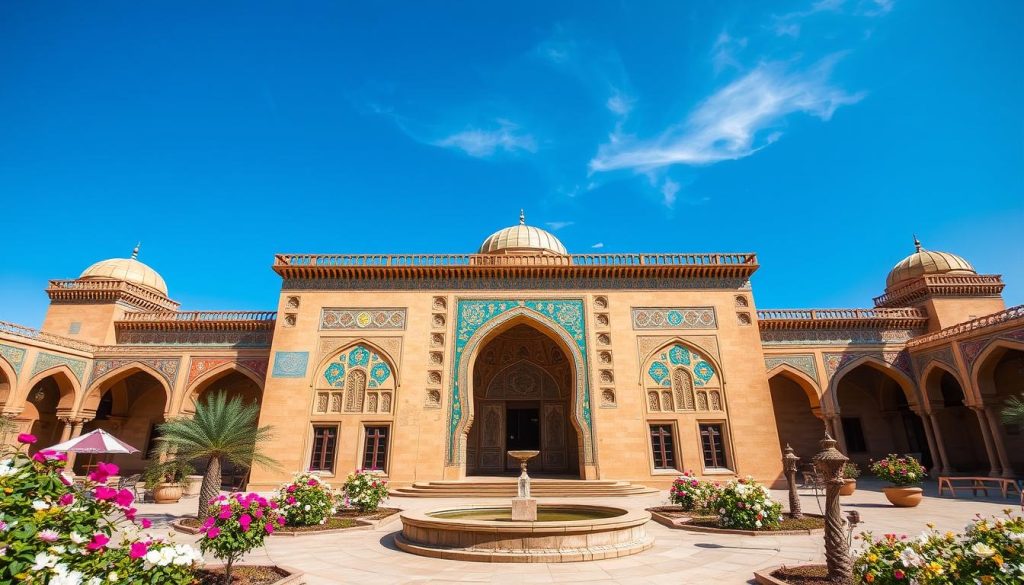
Qazvin, Iran: Best Things to Do - Top Picks
Qazvin is a city where history, culture, and architecture come together beautifully. It was once the capital of Persia. Today, it offers many Qazvin attractions that let visitors dive into the rich Iranian tourism scene.
The Imamzadeh Hossein Shrine is a must-see in Qazvin. It’s famous for its bright green tilework and beautiful Qajar-era art. This shrine is a key pilgrimage site, honoring Imam Reza’s son. It’s a major spiritual and cultural spot.
Don’t miss the city’s cultural experiences at the traditional bathhouses. Now turned into museums or cozy tea houses, they offer a peek into Persia’s past. These places show off Qazvin’s architectural beauty and lasting traditions.
| Qazvin Attractions | Highlights |
|---|---|
| Imamzadeh Hossein Shrine | Stunning green tilework and Qajar art, popular pilgrimage site |
| Traditional Bathhouses | Converted into museums and tea houses, offer insights into social history |
| Alamut Valley | Explore the fortress of the Assassins, hiking and trekking opportunities |
| Grand Bazaar | Vibrant shopping paradise, showcasing local crafts and delicacies |
Qazvin also offers the Alamut Valley and the Grand Bazaar. In the valley, you can see the historic Assassins’ fortress and enjoy hiking. The Grand Bazaar is a lively place for shopping, with local crafts and foods.
Qazvin is a treasure trove of history, architecture, and culture. It’s a top spot for those wanting a real Iranian tourism experience. Explore its secrets and make unforgettable memories in this Persian gem.
Local Culinary Delights
Qazvin, in northwestern Iran, is famous for its delicious local food. Discover the unique flavors that make this region’s dishes so special.
Famous Qazvin Baklava
Qazvin is known for its amazing baklava. This pastry is filled with pistachios, almonds, and a hint of sweetness. Unlike other baklavas, Qazvin’s version has a balanced taste that highlights the nuts.
Traditional Gheymeh Nesar
The star dish of Qazvin is gheymeh nesar. It’s a vibrant rice dish with tender lamb and spices. This dish is a true taste of Iranian food.
Best Local Restaurants
Qazvin has many great places to eat, showing off the city’s Qazvin cuisine. At Samadiyeh, enjoy authentic traditional Persian dishes in a warm setting. For dessert, try Zafferon in the Grand Bazaar for delicious baklava and pastries.
“Qazvin’s culinary scene is a true delight, offering a taste of Iran’s rich gastronomic heritage.”
Sacred Sites and Religious Architecture
Qazvin, once the capital of Persia, is filled with Qazvin mosques and Islamic architecture. These sites give a glimpse into Iran’s religious sites. The Imamzadeh Hossein Shrine is a standout, known for its stunning tilework and grand courtyard.
Visiting these places, it’s key to respect local customs and dress codes. Wear modest clothes and be respectful of these sacred spaces. This way, you honor the traditions and gain a deeper understanding of their importance in Iranian culture.
Qazvin is not just the Imamzadeh Hossein Shrine. It has many Qazvin mosques and Islamic architectural wonders. Each site has its own story and design, offering a chance to see the artistic and spiritual traditions of the area.
| Qazvin Mosques | Architectural Highlights | Historical Significance |
|---|---|---|
| Imam Mosque | Intricate tilework, grand dome, and ornate mihrab | Constructed in the 17th century, the mosque is a testament to the city’s rich Islamic heritage |
| Jame’ Mosque | Massive iwans, ornate entrances, and beautiful courtyards | One of the oldest mosques in Qazvin, dating back to the 12th century |
| Seyyed Mosque | Intricate tile patterns, elegant minarets, and a serene atmosphere | Built in the 16th century, the mosque is renowned for its exquisite architectural detailing |
Qazvin’s sacred sites and religious architecture are a must-see. They offer a rich and rewarding experience for everyone.
Traditional Bathhouses and Museums
Qazvin’s historic bathhouses have been turned into museums or tea houses. They give us a peek into Persia’s social history. These structures show off the detailed architecture and decorations of old Iranian baths.
Some bathhouses have become modern cultural centers. They host exhibitions and events that link Qazvin’s past to its present.
Historical Significance
The bathhouses of Qazvin were more than just places to bathe. They were social centers where people came together. These buildings, with their domed ceilings and tilework, show the area’s rich culture.
Many bathhouses go back to the Safavid and Qajar dynasties. They are historical gems that tell us about life in Iran long ago.
Modern Cultural Centers
Some bathhouses in Qazvin have been turned into museums and cultural centers. They let visitors see the city’s history up close. These places have exhibitions, workshops, and events that highlight the region’s cultural heritage.
Visitors can see the architecture, learn about old bathing customs, and dive into the lively Iranian museums of Qazvin.
If you’re into Qazvin bathhouses or the city’s cultural history, these sites are a must-see. They offer a unique look into the past and a connection to Qazvin today.
Conclusion
Qazvin, Iran, is a place that draws in travelers with its deep history and rich culture. It has everything from the mysterious Alamut Valley to the lively Grand Bazaar. This former Persian capital is a mix of experiences that dive you into Iran’s Persian culture and traditions.
Exploring Qazvin means seeing amazing sights like the Sa’ad al-Sultaneh Caravanserai. You can also try local foods like Qazvin baklava. The city’s sacred sites and architecture add to the journey, leaving a lasting memory. Its location and transport links make it perfect for exploring Iran’s culture and history.
When planning your trip to Qazvin, don’t miss out on the local markets and gardens. The city’s stunning views are also a must-see. Qazvin’s history, culture, and food make it a key spot for anyone wanting to experience Iran’s Persian heritage.
